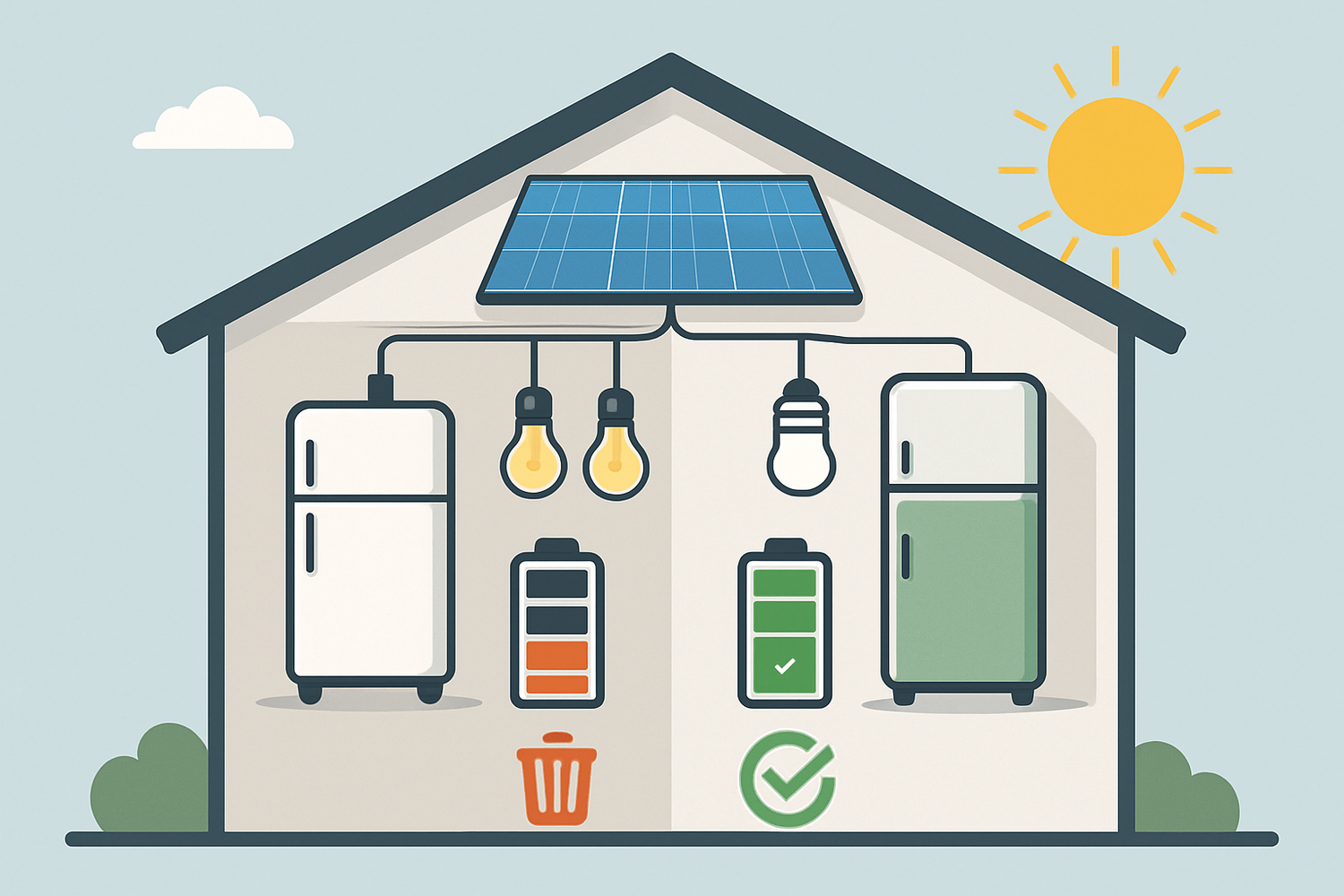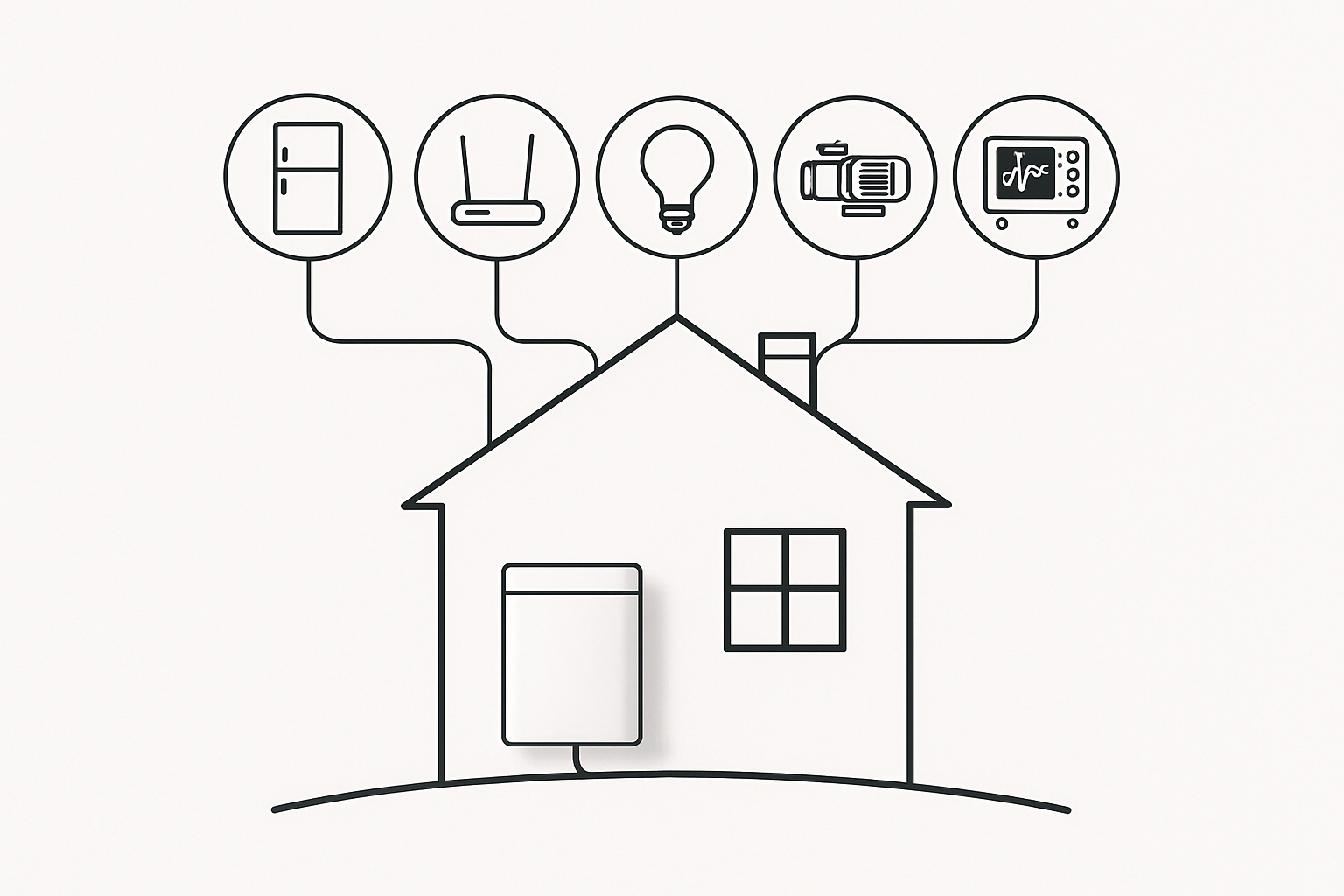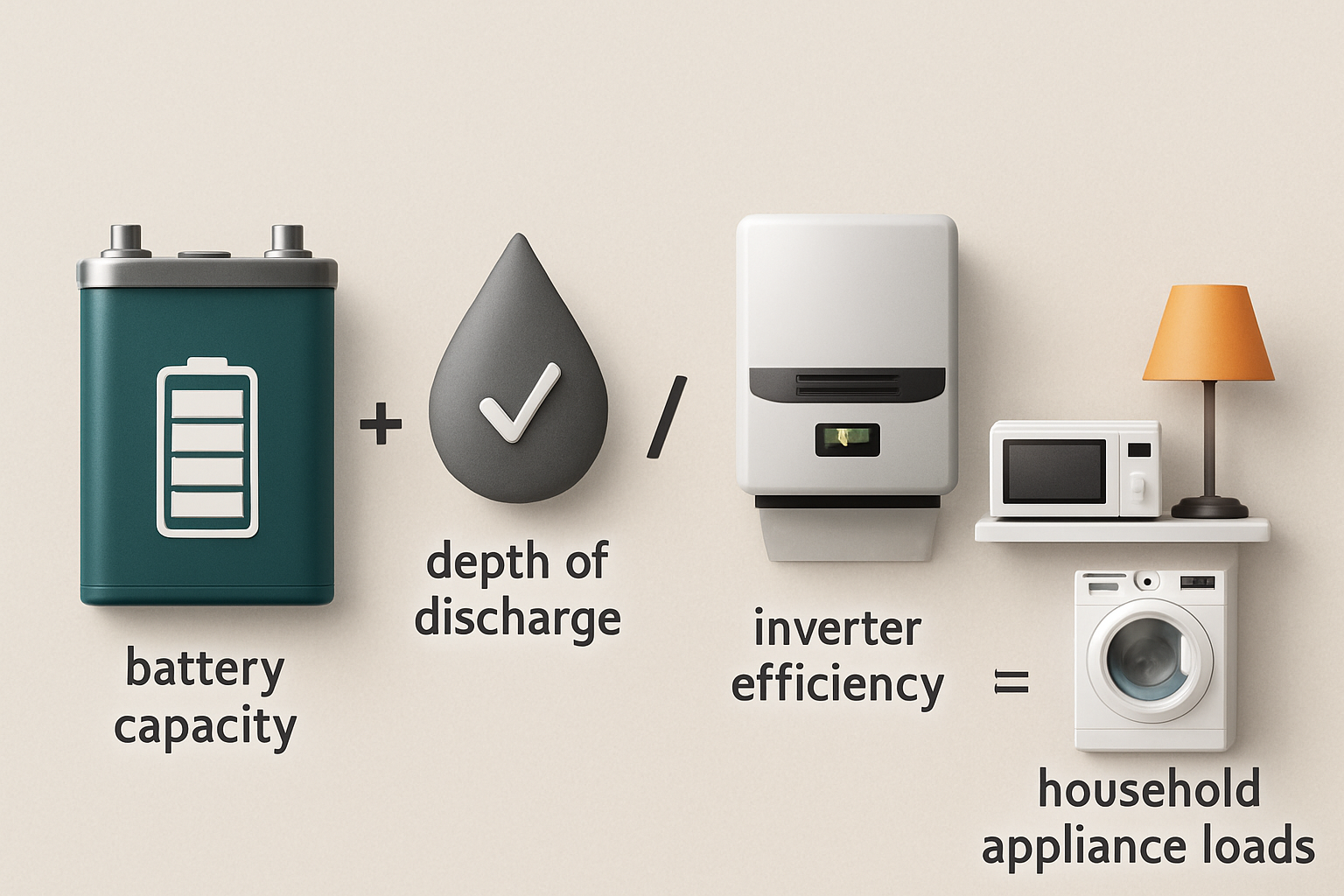You have invested in a solar energy storage system, embracing the path toward energy independence. Yet, you might find your battery depletes much faster than anticipated, especially overnight. The issue often isn't the battery itself, but a series of common misunderstandings about how your appliances consume power. Correcting these appliance load myths is crucial for solar power system optimization and extending your backup duration.
The Hidden Culprits: Unmasking Energy-Draining Appliances
The first step in effective load management is identifying which devices are consuming the most power. The culprits are not always the ones you expect. Many households experience significant energy drain from devices that are seemingly off or used infrequently.
Myth 1: 'Small' Appliances Don't Matter
Many people believe that small electronics like phone chargers, smart speakers, and televisions in standby mode draw negligible power. In reality, these devices create a constant 'phantom load' or 'vampire power' draw. While a single device might only pull a few watts, the cumulative effect of a dozen such items can be substantial, slowly but surely draining your precious battery storage throughout the day and night. According to the U.S. Department of Energy, phantom loads can account for up to 10% of residential electricity use.
Myth 2: All Large Appliances Are Equal
It's easy to group all major appliances together as high-consumption devices. However, a significant difference exists between older models and their modern, energy-efficient counterparts. An aging refrigerator or freezer can consume two to three times more electricity than a new model with a high energy efficiency rating. This inefficiency places a continuous, heavy strain on your home energy storage system.
| Appliance | Old Model (Approx. Wattage) | Energy-Efficient Model (Approx. Wattage) | Potential Energy Savings |
|---|---|---|---|
| Refrigerator | 150-250W | 50-80W | ~65% |
| Washing Machine | 2000-2300W | 400-600W | ~75% |
| Dishwasher | 1800-2200W | 1200-1500W | ~30% |
Myth 3: Turning Things Off is Enough
Flipping a switch to 'off' doesn't always sever the connection to power. Many modern electronics with remote controls, digital displays, or 'instant-on' features remain in a standby state. This state allows them to power on quickly but requires a constant stream of electricity. To truly stop this drain, you must unplug the appliance or use a power strip to cut off the power completely.
From Myths to Measurement: Accurately Estimating Your Load
To truly master your energy use, you must move beyond guesswork. Estimating solar battery life requires an accurate understanding of your actual consumption, which involves more than just reading the labels on your appliances.
Why Guesstimates Fail
An appliance's rated power (in Watts) only tells part of the story. It doesn't account for how long the device runs or the different cycles it may have. For example, a refrigerator's compressor isn't running 24/7. Furthermore, appliances with motors, like pumps or air conditioners, have a high 'inrush current' or surge power, drawing significantly more power for a few seconds when they start up. This surge can put a sudden, heavy strain on your solar inverter and battery.
Tools for an Accurate Energy Audit
The most reliable way to understand your consumption is to perform an energy audit. You can use a simple plug-in energy monitor to measure the real-world electricity usage of individual appliances over a 24-hour period. Many modern residential energy storage solutions also come with sophisticated monitoring software that provides a detailed breakdown of your household's power consumption in real-time.
Calculating Your True Backup Needs
Once you have accurate data, you can calculate your daily energy needs. The basic formula is: (Appliance Wattage × Hours of Use) = Watt-hours (Wh) per day. Summing the Wh for all your devices gives you a clear picture of your total daily load. This number is fundamental for correctly sizing a LiFePO4 lithium battery and ensuring you have enough capacity to meet your needs, especially during cloudy days or power outages.
Strategic Load Management for Maximum Battery Life
Armed with accurate data, you can now implement strategies to align your energy consumption with your solar production, drastically improving the performance of your battery energy storage system.
Time-Shifting Your Consumption
The most effective strategy is to shift the use of high-power appliances to the middle of the day when your solar panels are generating the most electricity. As noted in the IEA's Technology Roadmap - Solar Photovoltaic Energy 2010, managing loads to coincide with high solar generation can dramatically increase your energy self-consumption. Instead of running your dishwasher or washing machine at night, run them after lunch. This uses solar power directly, saving your stored battery energy for the evening and overnight.
Prioritizing Critical Loads
During a grid outage or on a low-sun day, you need to be selective about what you power. Differentiate between critical loads (e.g., refrigerator, lights, medical equipment) and non-critical loads (e.g., entertainment systems, coffee maker). A well-designed solar energy storage system can be configured with a separate critical load panel that only powers essential circuits when the battery reaches a certain low threshold, preserving power for what truly matters.
The Power of Efficient Upgrades
Replacing inefficient appliances is a direct investment in your energy independence. As research in an IRENA report on Electrification with renewables points out, upgrading to efficient appliances can reduce energy needs by 40% to 60%. This reduction means a smaller, less expensive solar and battery system can meet your needs. Understanding how load impacts battery health is vital. Reducing your overall load not only extends nightly backup but also improves the long-term performance and lifespan of your system, as explained in this ultimate reference on solar storage performance.
Your Action Plan for Energy Optimization
Moving from energy waste to energy efficiency is a clear path. By busting these common appliance load myths, you take control of your power consumption. This proactive approach ensures your solar battery delivers the performance and longevity you expect, providing reliable power when you need it most. Your journey to true energy independence is not just about generation; it's about smart consumption.
Frequently Asked Questions
How can I stop my solar battery from draining so fast at night?
The primary strategy is to reduce your overnight energy consumption. This involves tackling phantom loads by unplugging devices or using smart power strips, ensuring your refrigerator is energy-efficient and its seals are intact, and avoiding the use of high-power appliances like electric heaters or dryers after the sun goes down.
What is a 'phantom load' and how much energy does it waste?
A phantom or vampire load is the electricity consumed by an electronic device while it is switched off or in standby mode. This can account for a significant portion of a household's energy use, silently draining your battery when you're not even using the devices.
Will adding more solar panels solve the problem of a draining battery?
Not necessarily. More panels will help you generate more electricity during the day to charge the battery, but if your consumption patterns and inefficient appliances remain unchanged, you will still drain the battery quickly overnight or during cloudy periods. A balanced approach of optimizing consumption and having adequate generation and storage, like a high-performance LiFePO4 battery, is the most effective solution.





Leave a comment
All comments are moderated before being published.
This site is protected by hCaptcha and the hCaptcha Privacy Policy and Terms of Service apply.